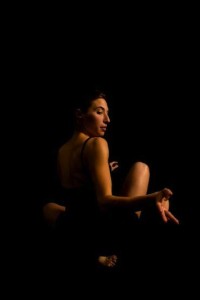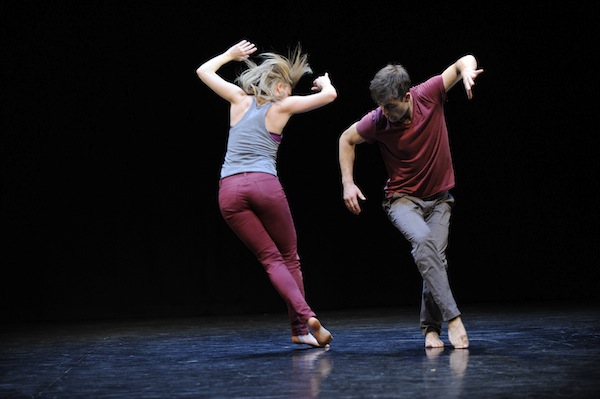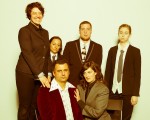Tara Cheyenne Performance’s how to be, part of Dancing on the Edge. (photo by Wendy D Photography)
This year’s Dancing on the Edge festival, which runs July 2-11, once again features the talents of many Jewish community members. The Jewish Independent asked several of them to describe the work they are presenting in the festival and to explain what makes it “edgy.” Their responses appear in the order in which their work appears in the festival.

Container, choreographed and performed by Vanessa Goodman, with original sound composition by Loscil, is a new work “that explores heritage, culture and resilience.” (Part of Edge 1, July 3 and 4, 9 p.m., at Firehall Arts Centre.)
“What makes the work ‘edgy’? Well, I am not 100% sure that I would categorize the work as edgy,” said Goodman. “However, I would say that the physicality/embodiment shifts between different extreme states, taking the witness/audience on a journey of my experience within the work.”
Re:Play: a duet choreographed by Naomi Brand and performed by Hilary Maxwell and Walter Kubanek. (Part of Edge Up, July 5 and 6, 8 p.m., at Firehall Arts Centre.)
“The piece is a playful exploration of the space between two bodies in dialogue,” said Brand. “It looks at what we choose to display and disclose and what gets hidden and smoothed over in conversation. The element of play is a theme that drives the duet as the dancers show and tell, watch and listen, repeat, respond and react to one another. The piece is set to a sound score that brings the process to light, with dancer Walter Kubanek practising Chopin’s Nocturne Op. 9 No. 1 on piano, and sound clips of the dancers in rehearsal. Playing on the edge between cooperation and competition, the dancers engage in a dynamic negotiation of space.”

Feasting on Famine: choreographed by Shay Kuebler, Radical System Art. (Part of Edge 5, July 9 and 11, 7 p.m., at Firehall Arts Centre.)
“This performance looks into the extremes of bodybuilding culture and how it references capitalism and the corporatization of the human body – growth edges out all other aspects of self. One man’s physically charged journey into the depths of extreme health and fitness will leave the audience on the edge of their seat.
“The work combines theatre, dance, and martial arts to construct an edgy and modern look at the extremes of society,” said Kuebler.
Duck Dances “promises to be a whimsical exploration of curious imagery, woven together with the color red to reveal a charming tableau of events within the framework of Dusk Dances,” reads the description on Dancing on the Edge’s website. (July 9, 10 and 11, 7 p.m., at Portside Park.)
“I am creating a piece in collaboration with Jennifer Mascall and Susan MacKenzie for Dusk Dances. We’re calling it Duck Dances,” Amber Funk Barton told the Independent. “For me, this work is ‘edgy’ because I have never created a site-specific work and our intention is that our performers will also be all ages and abilities. Using Crab Park as a studio instead of a studio is not only inspiring but challenging me to work outside of my comfort zones and creativity.
how to be is “the latest ensemble creation to emerge from the strange mind of Tara Cheyenne Friedenberg (Tara Cheyenne Performance). The piece examines how we think we should ‘be,’ how we think others should be and how impossible and futile it all is. Using ideas found in malignant social media, cultural restrictions, and the ceaseless voices in our heads, how to be traces five characters as they navigate how to be.” (Part of Edge 6, July 10, 7 p.m., and July 11, 9 p.m., at Firehall Arts Centre.)
“I consider this piece ‘edgy’ because it plays with text, audience relationship, what is ‘appropriate’ in life and in performance,” said Friedenberg. “This is not a typical dance piece, but it is a piece only highly trained dancers could do. I expect to tiptoe very near the edge of extremely uncomfortable and deliciously funny.”
For the festival’s full schedule, visit dancingontheedge.org.

